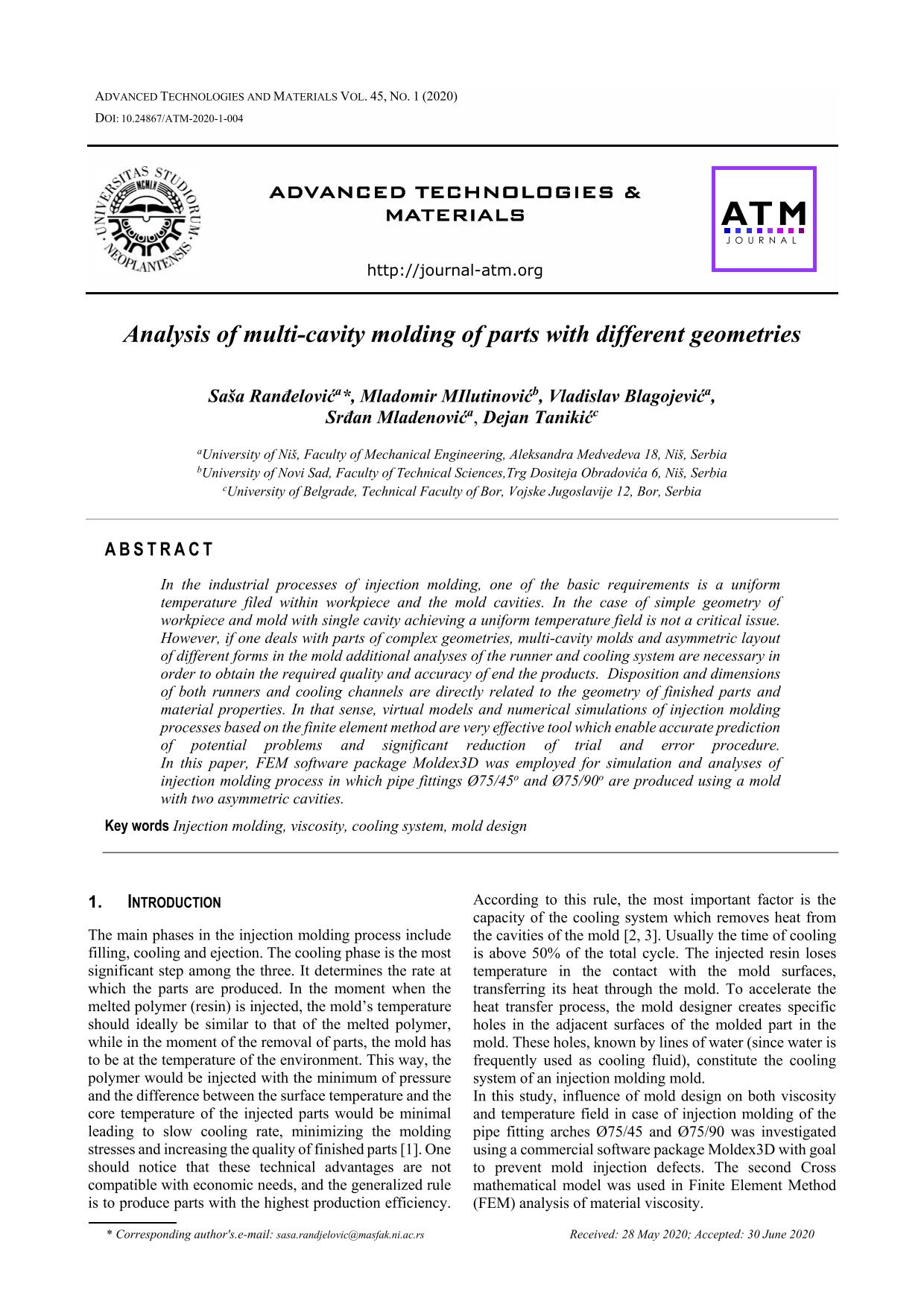
Published 2020-06-01
abstract views: 55 // Full text article (PDF): 12
Keywords
- Injection molding,
- viscosity,
- cooling system,
- mold design
How to Cite

This work is licensed under a Creative Commons Attribution 4.0 International License.
Abstract
In the industrial processes of injection molding, one of the basic requirements is a uniform temperature filed within workpiece and the mold cavities. In the case of simple geometry of workpiece and mold with single cavity achieving a uniform temperature field is not a critical issue. However, if one deals with parts of complex geometries, multi-cavity molds and asymmetric layout of different forms in the mold additional analyses of the runner and cooling system are necessary in order to obtain the required quality and accuracy of end the products. Disposition and dimensions of both runners and cooling channels are directly related to the geometry of finished parts and material properties. In that sense, virtual models and numerical simulations of injection molding processes based on the finite element method are very effective tool which enable accurate prediction of potential problems and significant reduction of trial and error procedure. In this paper, FEM software package Moldex3D was employed for simulation and analyses of injection molding process in which pipe fittings Ø75/45o and Ø75/90o are produced using a mold with two asymmetric cavities.

